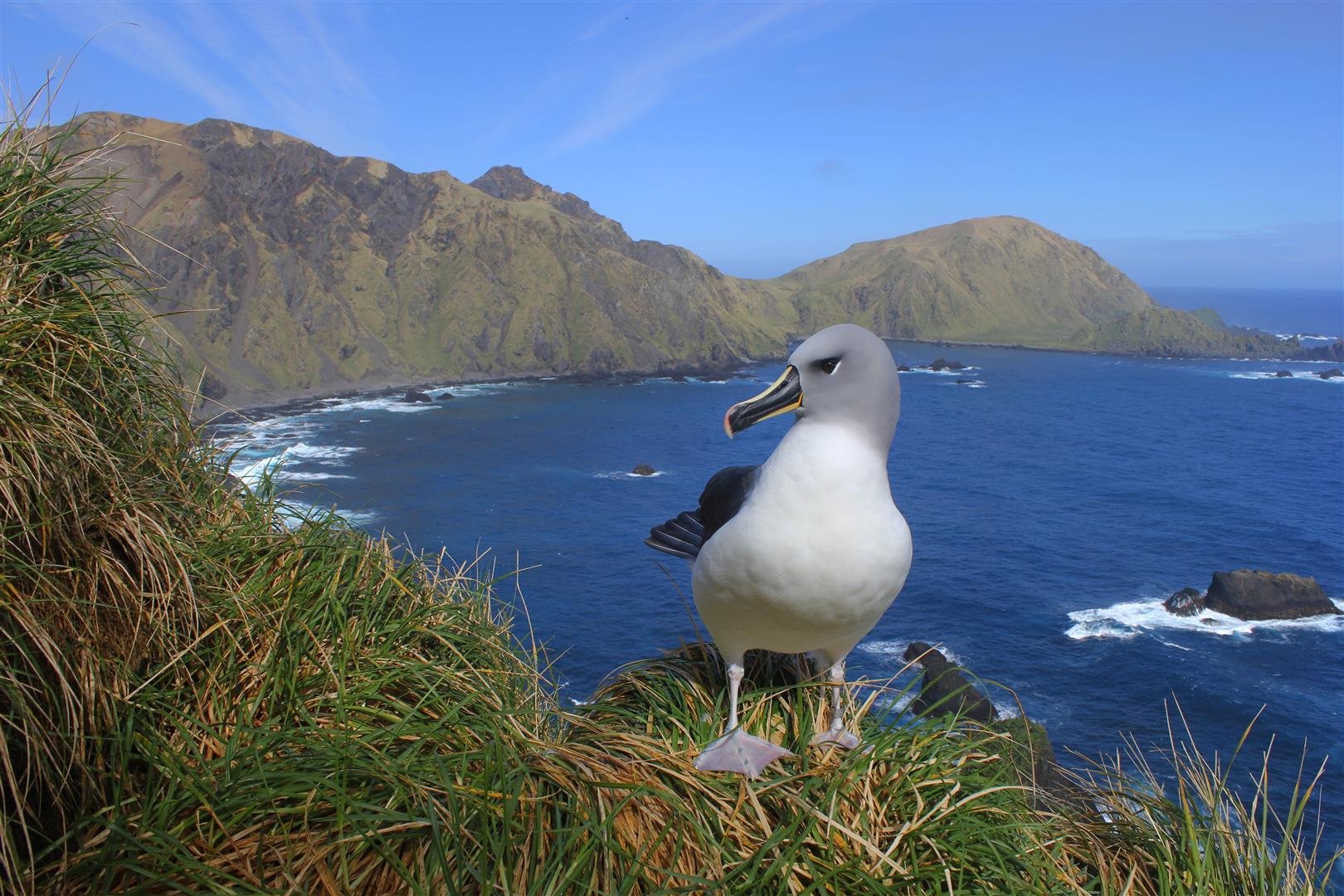 The successful eradicaiton of rodents and rabbits from Australia's Macquarie Island was an example in the study of where effective conservation interventions relieved the threat load on Australia's threatened bird taxa. A grey-headed Albatross on Macquarie Island; photo by Melanie Wells
The successful eradicaiton of rodents and rabbits from Australia's Macquarie Island was an example in the study of where effective conservation interventions relieved the threat load on Australia's threatened bird taxa. A grey-headed Albatross on Macquarie Island; photo by Melanie Wells
Stephen Garnett (Research Institute for the Environment and Livelihoods, Charles Darwin University, Australia) and colleagues have published open access in the journal Emu - Austral Ornithology a review of the projected impact of threats and the degree to which their management is executed for all threats to Australia’s threatened bird species in the decade between 2010 and 2020.
The paper’s abstract follows:
“Most biodiversity monitoring globally tends to concentrate on trends in species’ populations and ranges rather than on threats and their management. Here we review the estimated impact of threats and the extent to which their management is understood and implemented for all threats to all Australian threatened bird taxa. The assessment reports the situation in 2020 and how this differs from 2010. The most marked finding was that the impact of climate change has increased greatly over the last decade, and now surpasses invasive species as the threat imposing the heaviest threat load. Climate change has driven recent massive population declines from increased temperatures in tropical montane rainforests and from fire. For both direct climate change impacts and fire management, progress in understanding how to relieve the threats has been slow and patchy. Consequently, little effective management has occurred. By comparison, our analysis showed that the single successful campaign to eradicate introduced mammals from Macquarie Island relieved the total threat load on Australian threatened birds by 5%, and more than halved the load on the birds from oceanic islands. Protection or rehabilitation of habitat, particularly on islands, has also delivered measurable benefit as have, in the longer term, controls on longline fishing. Our approach can be used with other taxonomic groups to understand progress in research and management and to allow quantification of potential benefits from proposed actions, such as the national threatened species plan.”
Reference:
Garnett, S.T., Woinarski, J. C. Z., Baker, G. B., et al. (2024) Monitoring threats to Australian threatened birds: climate change was the biggest threat in 2020 with minimal progress on its management, Emu - Austral Ornithology, 124:1, 37-54, DOI: 10.1080/01584197.2023.2291144
06 March 2024

 English
English  Français
Français  Español
Español